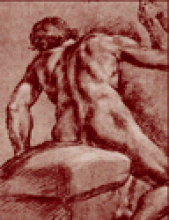- © 2005 CMA Media Inc. or its licensors
While I applaud the eagerness and scientific curiosity of Kenneth Rockwood and colleagues,1 their study of NOELs kept me awake for several nights as I pondered methods to accurately measure this phenomenon.
As an anesthesiologist, I am always trying to ensure that my subjects are asleep during surgery, while hoping that my residents are awake during my lectures. Recent mass mailings, television “news” shows and even some scientific journal articles have touted the use of the BIS (bispectral index) monitor (Aspect Medical Systems, Newton, Mass.) as a method of determining the depth of anesthesia. The final verdict is not yet in on the ability of this instrument to measure patient awareness, but the BIS monitor could certainly be used to prove the validity of the NOEL concept.
Granted, having BIS electrodes taped to their foreheads might initially tend to make members of an audience actually listen to the lecture (possibly a benefit). However, after the initial studies, audiences would become used to the monitoring equipment, and the data would be ripe for the picking.
Computerized analysis of audience response to a lecture could be immediately made available to the lecturer. Graphic displays of impending NOELs would alert the speaker to change his or her tactics. No longer would a lecture be inefficient as a learning method. At the same time, the data could be examined on an individual basis. One such outcome could allow audience members to save money: Why pay for a lecture that you slept through? At the very least, an audience member should not have to pay for the percentage of the lecture that he or she missed because of NOELs. Regulatory agencies might also use the data as a means of certifying continuing medical education (e.g., a physician must complete 40 hours of proven-awake medical education per year to retain his or her licence).
Should a lecturer be unable to change his tactics to awaken the audience, a feedback loop could be included to “stimulate” audience members to remain attentive.
Other possibilities surely exist. I wish to offer my services to the authors should they continue their work in this area. After all, celebrated careers in medicine have been built on less. And the lecture circuit awaits the findings of such truly relevant research.
Reference
- 1.↵











